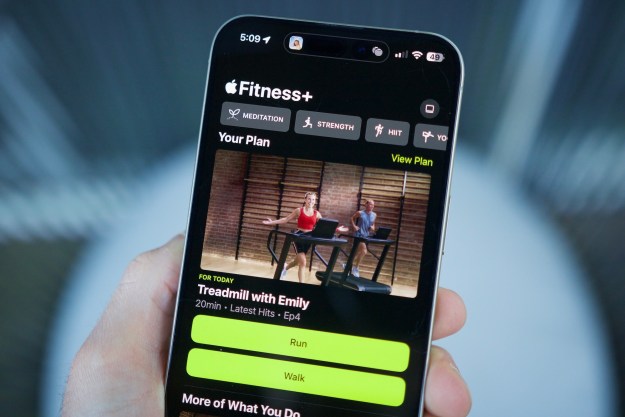
In many ways, Android Wear 2.0 Developer Preview 3 represents, as its long-winded name might suggest, a milestone for the work-in-progress operating system. But an addition that stands above the rest is the Play Store for Android Wear, an app store optimized for smartwatches. It’s replete with a list of recommended apps and games, the ability to switch between different accounts, buttons for enrolling in alpha or beta programs, and a “My apps” screen from which you can update or remove installed apps.
And on the distribution side of things, it allows developers to publish apps exclusively to Android Wear — they won’t appear appear visible in the Play Store on

The addition of the Play Store to Android Wear was the result of “studies” on user behavior, Google said. Most smartwatch wearers, the search giant found, expected to find apps right on their wearable. “[They] told us [they] wanted to make it easier … to discover apps,” Google said. A miniaturized Play Store presented the perfect solution. “The Play Store on the watch helps users find apps right where they need them.”
You’d be forgiven for assuming a wrist-bound app store obviates the need for phone-based management. That’s largely the case — the Play Store is accessible when the watch is connected to Wi-Fi or, on devices with cellular capabilities, a carrier network. But you can’t quite leave your phone at home: purchases for paid apps must be authenticated on a paired handset. (Google said it plans to eliminate that requirement down the line.)
An app store isn’t the only big improvement in tow with Android Wear 2.0. Another major enhancement is Smart Replies, a feature of Google’s artificially intelligent Google Assistant platform that supplies canned responses to messages and emails. Uniquely, the

Meanwhile, Complications, the information-rich animated icons that dot custom watch faces, default to developer-specified settings in Developer Preview 3. And two new development tools, WearableRecyclerView and Inline Action for Notifications, help make it easier for developers to create vertical lists and let users take action on notifications “right from the stream.”
Android Wear 2.0 Developer Preview 3 is available now, but only for a select few watches: the Huawei Watch and LG Watch Urbane 2nd Edition. If you’re the lucky owner of either of those, you can nab the appropriate build from the Android Developer website.
A word of warning, though — installation isn’t a cakewalk. The steps require a familiarity with Android’s developer suite, and Developer Preview 3 contains a few bugs that some might consider deal-breaking. Google’s fitness platform, Google Fit, isn’t available with Preview 3; “OK Google” voice detection doesn’t work reliably; and Smart Reply is only available if your watch’s system language is English.
Alternatively, you can test Developer Preview 3 on an emulator.

Android Wear devices, some might say, are stuck between a rock and a hard place. They’re by nature pitted against Apple’s juggernaut wearable, the Apple Watch, which commanded a 33.5 percent share of the U.S. smartwatch market in the three-month period that ended with July (see: Kantar Worldpanel). And they compete with smartwatch offerings from the likes of Samsung and Tencent, which run proprietary operating systems with incompatible app stores. Analysts say that has generated hesitancy on the part of Google’s partners: though Asus, Fossil, Michael Kors, Polar, and Nixon announced
Google may be poised to take matters into its own hands. In July, rumors emerged of two Google-made Nexus smartwatches, code-named Angelfish and Swordfish. The former, Angelfish, reportedly features “smooth housing shape that curves where the watch band meets the body,” three physical buttons, and myriad sensors including a heart-rate monitor, GPS, and LTE connectivity. The latter, which sports a “gentle and rounded” shape, by contrast, is said to resemble the Apple Watch.
Editors' Recommendations
- Does the Google Pixel Watch work with an iPhone?
- Android 12L and Wear OS 3 show Google still isn’t serious about tablets and smartwatches
- Google’s first Android 11 developer preview brings permissions tweaks and more


